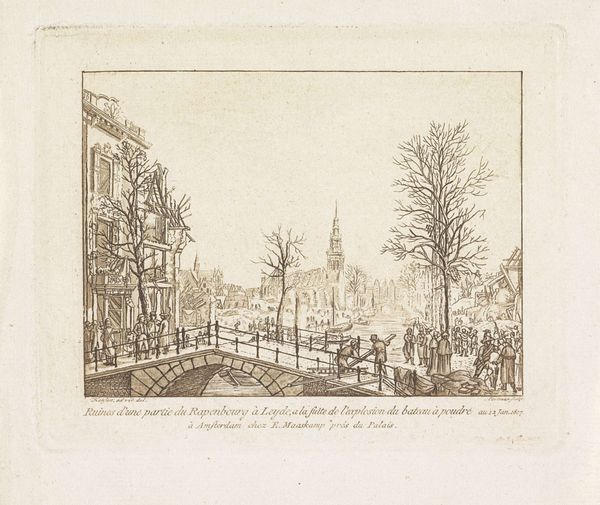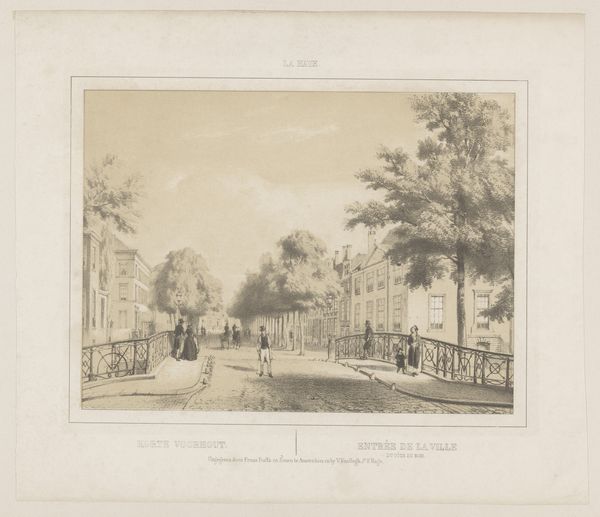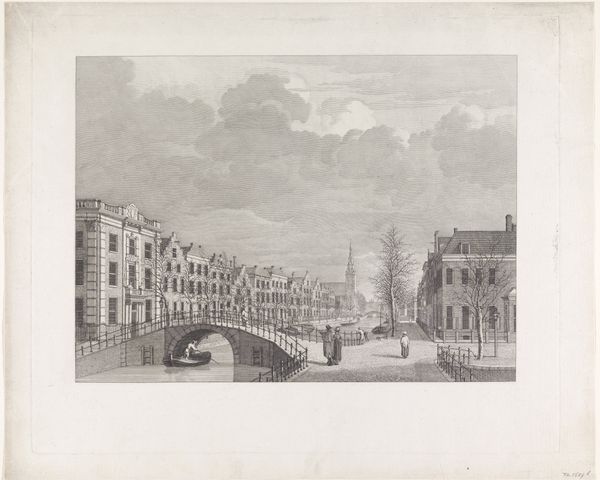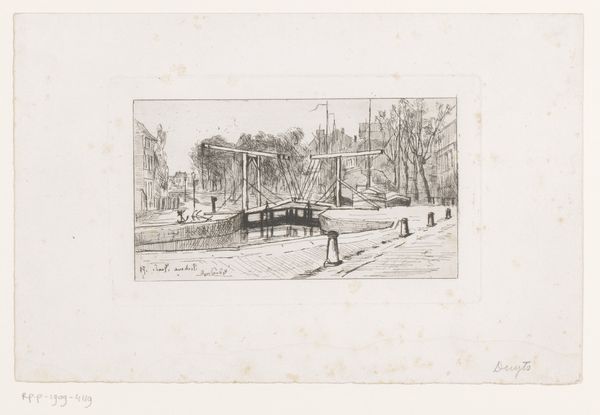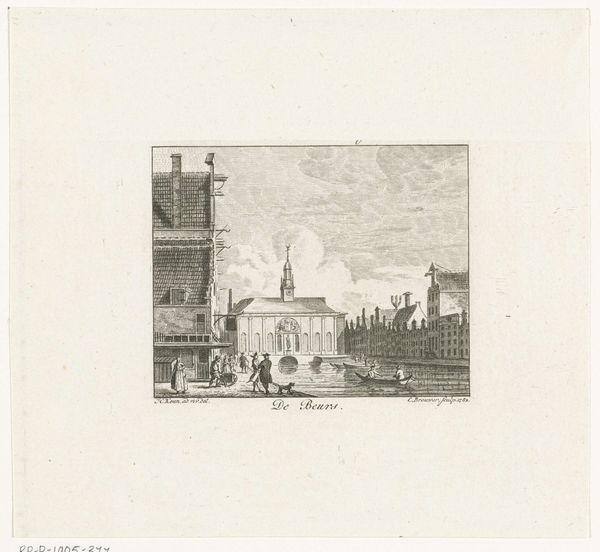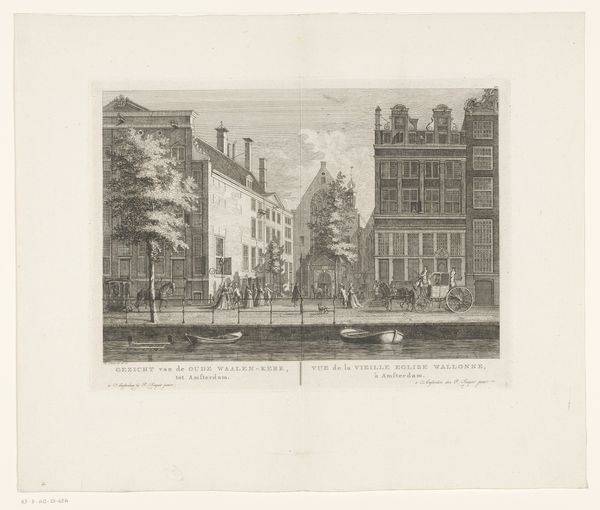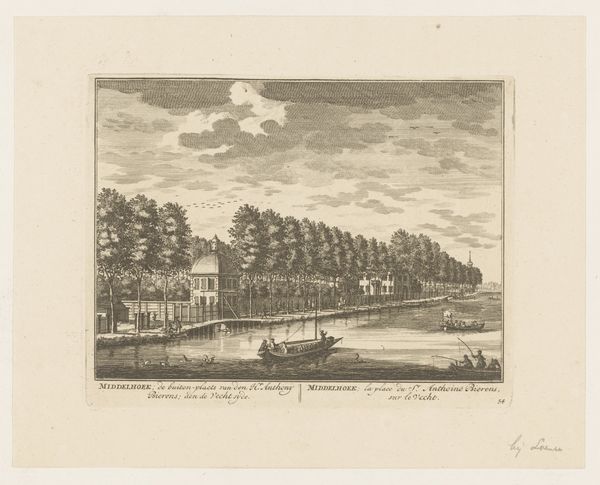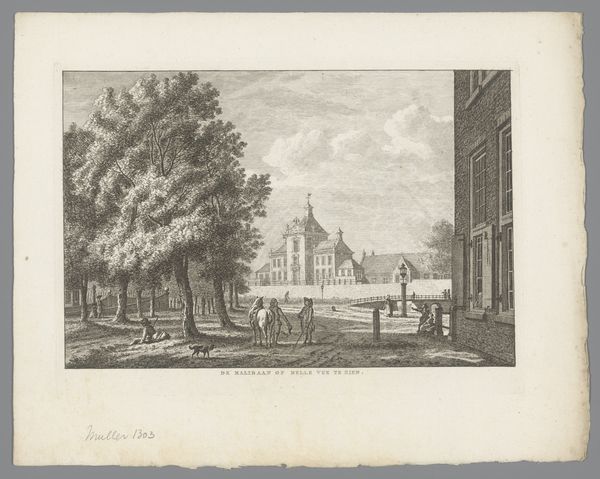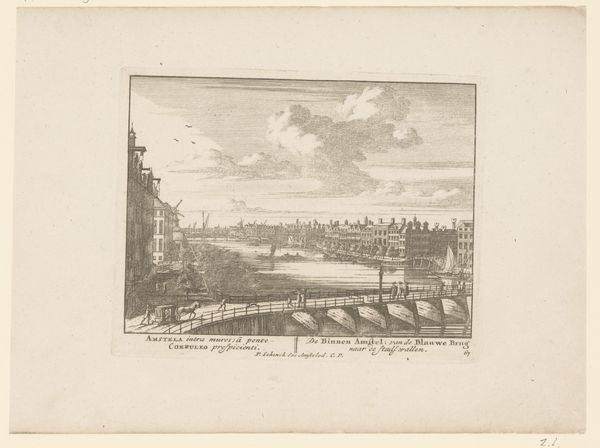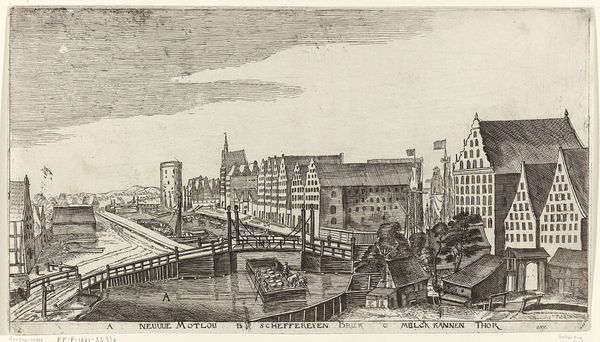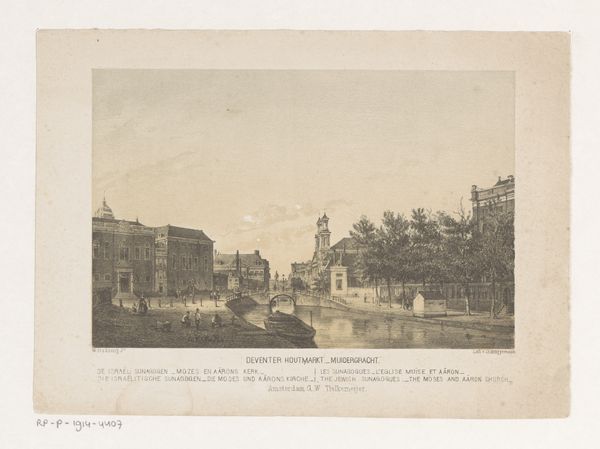
print, etching
#
neoclacissism
# print
#
etching
#
landscape
#
etching
#
cityscape
#
realism
Dimensions: height 103 mm, width 130 mm
Copyright: Rijks Museum: Open Domain
Editor: So, here we have Ludwig Gottlieb Portman's "Het Rapenburg te Leiden, 1807," created around 1816. It's an etching, quite small, and presents a tranquil cityscape. It feels...understated. What captures your attention when you look at this? Curator: Understated is a lovely way to put it. It whispers rather than shouts, doesn't it? For me, it’s the ghost of history that lingers. Knowing the inscription refers to “before the explosion of the powder boat," it's like witnessing serenity on the verge of chaos. You can almost hear the quiet hum of daily life, totally oblivious to the imminent drama. Editor: The…explosion? I hadn't picked up on that from the image alone. Curator: Yes, history lurking beneath the surface! What I find compelling is how Portman chose to depict this calm *knowing* what was about to happen. Look how he painstakingly rendered the buildings and trees – almost Neoclassical in their precision, don't you think? – while this potential for immense destruction simmers beneath. Does it make you view the scene differently now? Editor: Definitely. I see the figures on the bridge in a new light now, as vulnerable. It's odd how he includes them in a supposedly objective landscape. Curator: Exactly! The ‘objective’ eye is never truly neutral, is it? The human presence juxtaposed with architectural realism – it’s a quiet commentary, perhaps, on the fragility of life, of beauty, of peace. The artist has immortalized a singular historical point for those that were to witness it later. What do you make of his composition choices now? Editor: The subtlety is striking, almost a form of quiet protest, perhaps. Thanks, I missed the broader cultural commentary. Curator: That's the beauty of art, isn't it? It speaks when we listen closely.
Comments
No comments
Be the first to comment and join the conversation on the ultimate creative platform.
